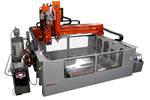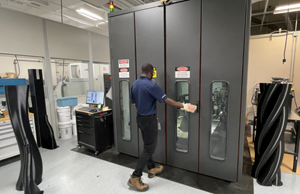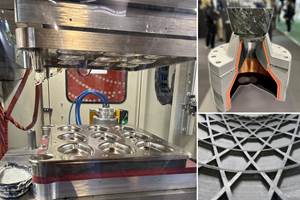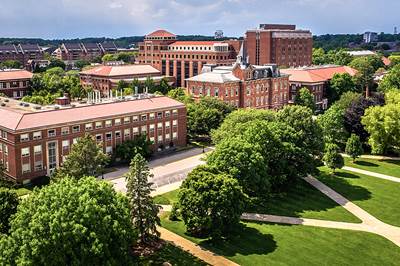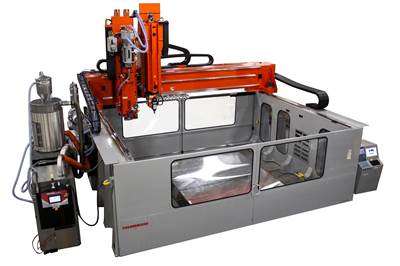Purdue University to establish Thermwood LSAM research laboratory
Industry-funded research to pursue large-scale composite thermoplastic additive manufacturing, with the goal of providing services to enhance, encourage and expand the adoption of large-scale AM for diverse industrial applications.
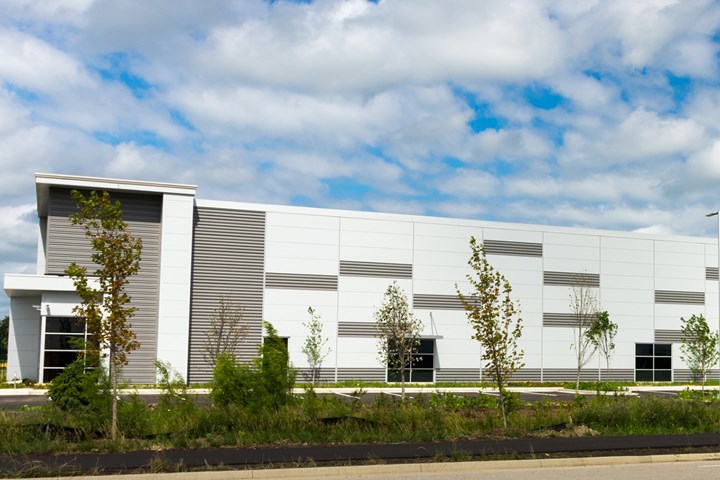
All photo credit: Thermwood Corp.
Purdue University’s Composites Manufacturing Simulation Center (CMSC, West Lafayette, Ind., U.S.) and Thermwood Corp. (Dale, Ind., U.S.) have agreed to establish a large-scale additive manufacturing (LSAM) laboratory to perform industry-funded research into large-scale composite thermoplastic additive manufacturing (AM).
The new facility will be established at Purdue’s Indiana Manufacturing Institute, located in the Purdue Research Park in West Lafayette, Ind., and will be staffed and operated by Purdue CMSC personnel. The official name for the new facility is the “Thermwood LSAM Research Laboratory at Purdue University.”
The new laboratory will be equipped with an LSAM 105 (ten-five) Large-Scale Additive Printer and a corresponding five-axis LSAM Additive Trimmer, as well as a variety of support systems. Thermwood says this installation is capable of printing and trimming complex geometries up to 5 x 10 x 4 feet tall at print rates of up to 100 pounds per hour. Commercial maximum print temperature for LSAM printers is usually limited to 450ºC, however, this particular system has been modified to enable testing at even higher temperatures for experimentation with innovations in materials normally not used in AM.
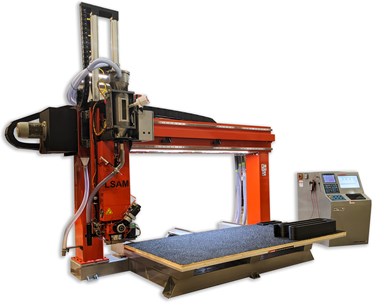
“Not only will this effort improve the overall quality of large-scale additive printing, but it should also increase our knowledge and understanding of the basic process of fusing layers together into a homogeneous structure,” says Ken Susnjara, founder, chairman and CEO of Thermwood.
According to Dr. R. Byron Pipes, executive director of Purdue’s CMSC, the research organization where the LSAM system will be installed, “Extrusion deposition composite additive manufacturing is a major innovation that will contribute to the development of tailored products with unique performance and just-in-time availability.”
Purdue plans to partner with industry to provide services to enhance, encourage and expand the adoption of large-scale AM for diverse industrial applications. They also plan to work with polymer suppliers to refine formulations and determine the ideal processing parameters necessary to produce the high-quality large-scale-printed parts.
Collaborative efforts of this type bring together diverse organizations that each specialize in different aspects of this emerging technology and often produce results that none of the participants could possibly achieve on their own. Both Purdue and Thermwood are confident that this will be the outcome of their collaborative effort.
Related Content
Eaton developing carbon-reinforced PEKK to replace aluminum in aircraft air ducts
3D printable material will meet ESD, flammability and other requirements to allow for flexible manufacturing of ducts, without tooling needed today.
Read MoreThermoplastic composites: Cracking the horizontal body panel nut
Versatile sandwich panel technology solves decades-long exterior automotive challenge.
Read MoreComposites end markets: Sports and recreation (2025)
The use of composite materials in high-performance sporting goods continues to grow, with new advancements including thermoplastic and sustainability-focused materials and automated processes.
Read MoreJEC World 2024 highlights: Thermoplastic composites, CMC and novel processes
CW senior technical editor Ginger Gardiner discusses some of the developments and demonstrators shown at the industry’s largest composites exhibition and conference.
Read MoreRead Next
Purdue develops lignin extraction method for sustainable composite board resin binder
The extraction method reduces production cost, long-term health hazards and can be used as the main component in a non-formaldehyde binder system.
Read MoreThermwood completes first LSAM 1010 system
Large-scale additive manufacturing system simultaneously prints and trims via a single, large gantry and offers speeds up to almost three feet per second.
Read MoreCeramic matrix composites: Faster, cheaper, higher temperature
New players proliferate, increasing CMC materials and manufacturing capacity, novel processes and automation to meet demand for higher part volumes and performance.
Read More

